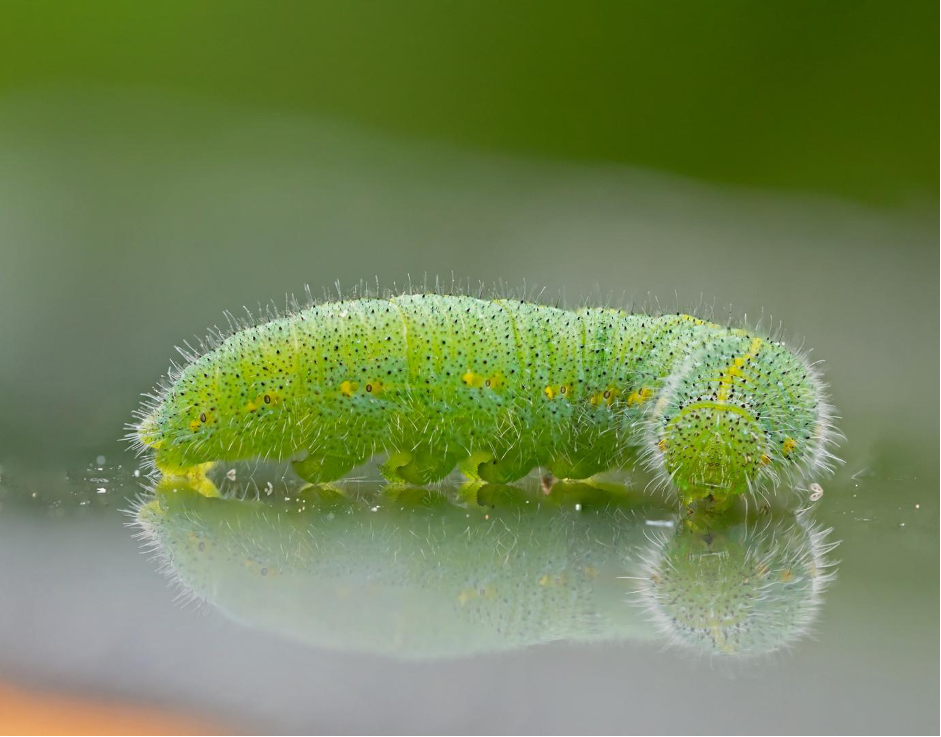Summary
- Wet weather means theres a green bridge risk in much of SE-Australia
- High numbers of cabbage white butterfly have been recorded, but they pose a low risk for winter crops
- Other pests such as Russian wheat aphid and common armyworm could also thrive under the wet, mild conditions
- Increase monitoring at establishment to avoid defoliation of seedlings
Wet and mild summer
It’s been a wet and mild summer for many regions in south eastern Australia. This means the green bridge is going strong and the risk of pests moving from the green bridge into establishing crops in autumn is high.
Some of the pests which can take advantage of the green bridge to increase their populations over summer are: the Russian wheat aphid and the green peach aphid, bryobia mites and slugs. There is also a lot of common armyworm around this season. Since they lay their eggs in standing stubble, it will be especially important to monitor establishing crops sown into stubble this year.
More information on how the Russian wheat aphid responds to the green bridge.
Cabbage white butterfly reports
We have recently received a lot of ID requests for the cabbage white butterfly (Pieris rapae), an introduced, cosmopolitan pest found in the backyards, vegetable patches and farms across much of Australia. Reports of larvae in brassica crops and or lucerne have come in from numerous locations in Victoria including Shepparton, Elmore and Colac.
Little risk of damage for grain crops
Cabbage white butterfly larvae feed on brassica crops, so while they are a nuisance in urban gardens and a serious pest on some vegetable farms, they are less of a problem in grains. At most, they are an occasional pest in broadacre canola and forage brassica crops over summer.
Cabbage white butterfly rarely reach high enough numbers to cause serious damage to a crop, and canola can withstand quite high levels of defoliation from this pest before intervention is needed. Unless larvae numbers are very high, the damage caused by cabbage white butterfly generally does not affect canola yield.
Identification and lifecycle
Cabbage white butterfly adults are medium sized with a wingspan of approximately 40 mm. The butterflies are creamy white in colour with black spots on the centre of each forewing (1 spot for males, 2 for females). The tips of the forewings of the adult cabbage white butterfly are also a light charcoal colour which is easily visible when their wings are open.
During spring, adults mate and females lay their eggs on the underside of the leaves of brassica crops. Cabbage white butterfly eggs are yellow in colour, bottle-shaped and are laid singly or in small clusters.

Larvae grow through 5 instars, feeding on the outer edges of leaves and moving towards the centre of the plant as they grow. The larvae grow to approximately 30 mm in length, are covered in short white hairs and are a velvety green colour with a faint yellow stripe running along their back and each side of their body.
Once cabbage white butterfly larvae reach are fully grown, they find a secure place on the leaf or stem of their host plant, to form a pupa. Adult cabbage white butterflies emerge from the pupal casing after approximately 1 week. There can be several generations each year.
This butterfly can be confused with diamondback moth (Plutella xylostella) which is also known as the cabbage moth. However unlike the cabbage white butterfly, diamondback moth can cause damage to winter crops and has evolved resistance to several insecticides registered for use against it.
More information about diamond back moths.
Management
The cabbage white butterfly is a warm season pest and will diminish towards the end of autumn as the cool weather sets in. However, at this time of the year spring-sown canola can be at risk of defoliation by the larvae.
In wet seasons such as this year, natural enemies will be your best bet to help keep numbers at reasonable levels, with parasitic wasps providing high levels of control.

More information on lepidopteran parasitoids
Old crop residue can become a reservoir for subsequent infestations of cabbage white butterfly, so consider rotation with a non-host crop to help break the generational cycle if this pest has been an issue in the past.
Acknowledgements
Thank you to Dale Boyd (AgVic), Evan and Fiona Lloyd and Andrew Allsop (Notman Pasture seeds) for observations, and to Leo McGrane (Cesar Australia) for contributions to this article.
Cover image: Photo by Evan Lloyd, Shepparton Victoria







